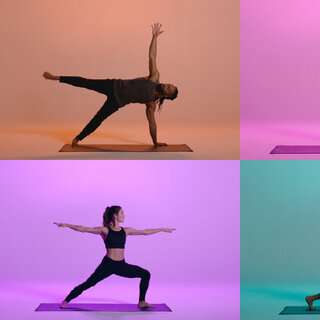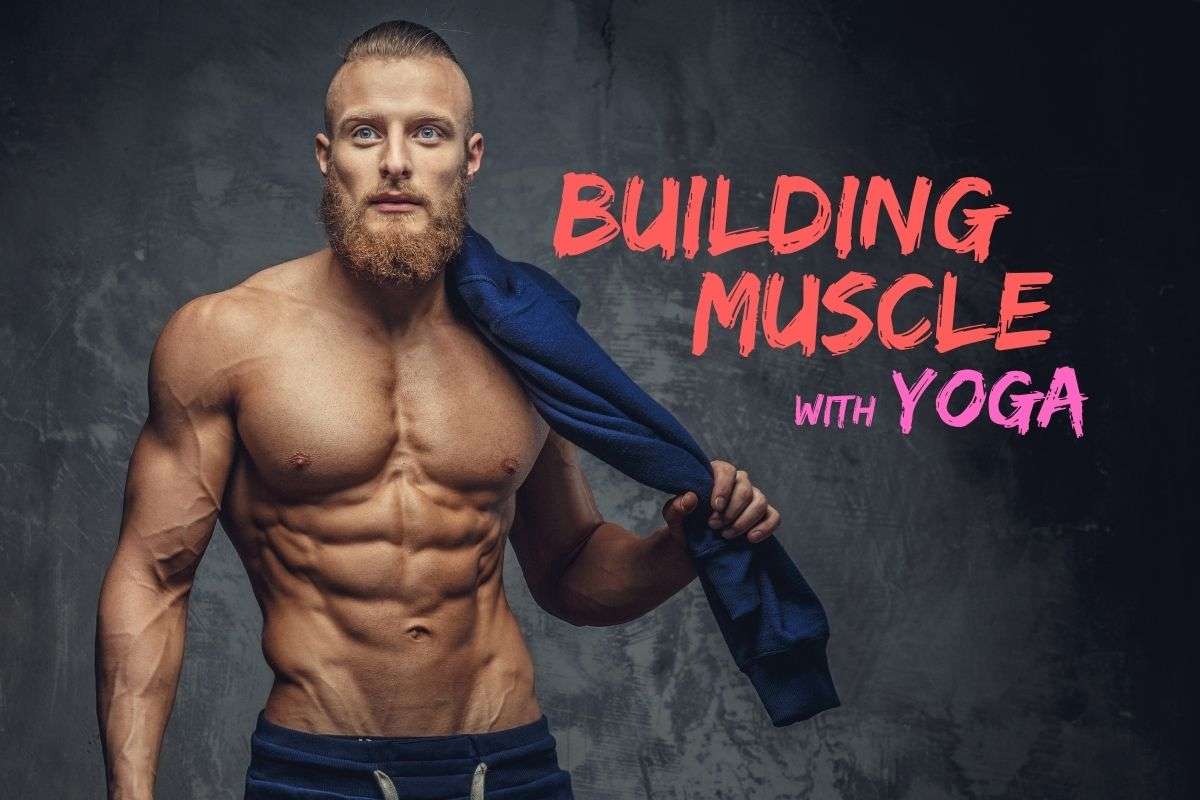So you’ve heard about the many benefits of yoga, from increased flexibility to improved mental well-being. But what about building muscular strength? Can yoga really help you increase your muscle power and tone your body? The answer might surprise you. While yoga may not be the first exercise that comes to mind when you think of building strength, it can definitely be a powerful tool in your fitness arsenal. In fact, the combination of flowing movements, bodyweight resistance, and isometric holds in yoga poses can gradually and effectively build your muscular strength over time. So if you’re looking to sculpt and strengthen your muscles in a holistic and mindful way, read on to discover how yoga can indeed be a game-changer for your strength training journey.
Benefits of Yoga for Muscular Strength
When you think about building muscle and getting stronger, yoga may not be the first thing that comes to mind. However, yoga can actually be a highly effective practice for improving muscular strength. Here are some of the key benefits you can expect to experience when incorporating yoga into your strength training routine.
Increased muscle tone
One of the major benefits of yoga for muscular strength is that it helps to increase muscle tone. The various poses and movements in yoga require you to engage and activate different muscle groups, which in turn helps to strengthen and tone them. As you hold the poses and flow through the sequences, you’ll notice an improvement in the definition and firmness of your muscles.
Improved muscle endurance
Muscle endurance is another area where yoga excels. The practice involves holding poses for an extended period of time, which helps to build endurance and stamina in your muscles. As you continue to practice yoga regularly, you’ll find that you’re able to hold poses for longer durations without feeling fatigued. This increased muscle endurance can be beneficial not only for your yoga practice but also for activities in your everyday life that require strength and stamina.
Enhanced muscle flexibility
Flexibility is an important aspect of muscular strength, and yoga is renowned for its ability to improve flexibility. The different poses and stretches in yoga target muscles and connective tissues, helping to increase their range of motion. By regularly practicing yoga, you’ll notice that your muscles become more supple and flexible, allowing for greater mobility and preventing the risk of injuries associated with tight muscles.
Promotion of muscle balance
Muscle balance is crucial for overall strength and functionality. Imbalances in muscle strength can lead to poor posture, increased risk of injuries, and overall limitations in movement. Yoga helps to promote muscle balance by targeting and strengthening both the major muscle groups as well as the smaller stabilizer muscles. This holistic approach to muscle development ensures that all areas of your body are equally strong and functional, leading to better overall muscular strength.
Types of Yoga for Muscular Strength
If you’re interested in using yoga to build muscular strength, it’s important to choose the right type of yoga that emphasizes strength development. Here are some popular styles of yoga that are particularly beneficial for building muscle.
Power yoga
Power yoga is a dynamic and physically intense style of yoga that focuses on building strength and endurance. It incorporates elements of traditional yoga poses and combines them with flowing movements and challenging sequences. Power yoga provides a full-body workout, targeting all major muscle groups and helping to build strength, flexibility, and stamina.
Ashtanga yoga
Ashtanga yoga is a disciplined and structured practice that involves a set sequence of poses performed in a specific order. This style of yoga emphasizes strength and flexibility, and the constant flowing movement from one pose to the next helps to build muscular endurance. Ashtanga yoga is particularly effective for building core strength, as many of the poses require engagement of the abdominal muscles.
Vinyasa yoga
Vinyasa yoga, also known as flow yoga, is a dynamic and fluid style of yoga that synchronizes movement with breath. The continuous flow of poses and transitions in vinyasa yoga creates a challenging workout for the muscles, helping to build strength and improve overall body conditioning. It is a great choice for those looking to combine cardiovascular exercise with muscular strength development.
Bikram yoga
Bikram yoga, also known as hot yoga, is practiced in a heated room with temperatures ranging from 90 to 105 degrees Fahrenheit. The heat helps to warm up the muscles and increase blood flow, allowing for greater flexibility and enhanced strength-building potential. Bikram yoga consists of a series of 26 poses, providing a full-body workout and promoting muscular strength and endurance.
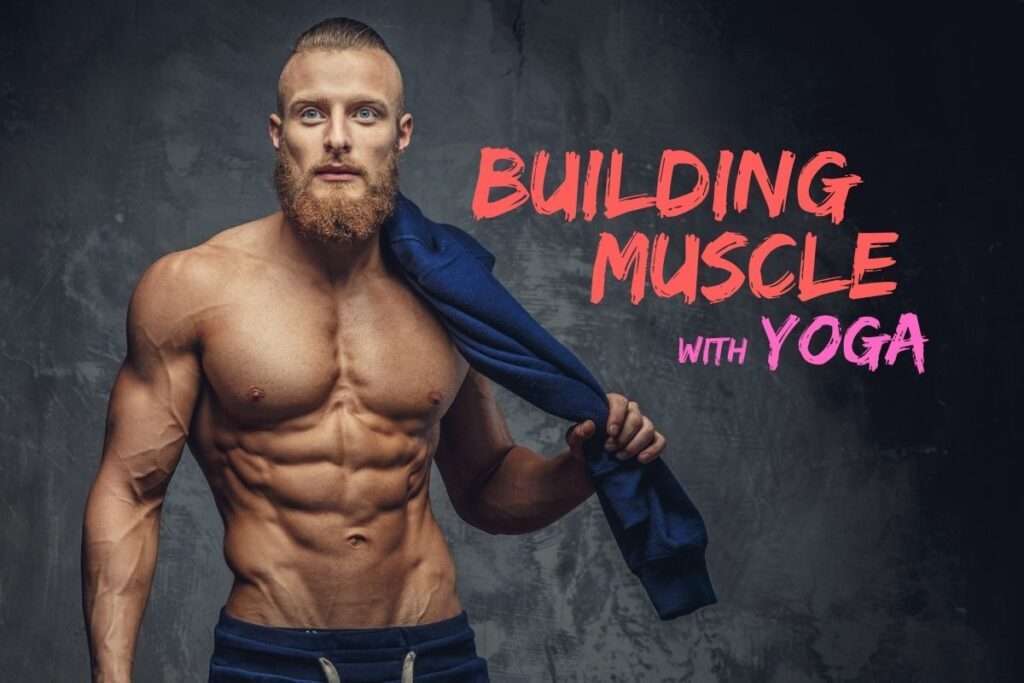
Yoga Poses for Building Muscular Strength
Yoga poses, or asanas, are key in building muscular strength. Here are some poses that specifically target and strengthen different muscle groups in your body.
Warrior poses
The Warrior poses, including Warrior I, Warrior II, and Warrior III, are excellent for building lower body strength. These poses target the muscles in your legs, including the quadriceps, hamstrings, glutes, and calves. They also engage the core muscles, helping to build strength and stability in the abdominal area.
Chair pose
Chair pose, or Utkatasana, is a powerful pose that targets the muscles of the lower body, including the quadriceps, glutes, and calves. This pose also engages the core muscles and the muscles of the arms and shoulders. Holding the Chair pose for an extended period of time can help to build strength and endurance in these muscle groups.
Plank pose
Plank pose, or Phalakasana, is a foundational pose that targets the muscles of the core, including the abdominals, obliques, and lower back. It also engages the muscles of the upper body, including the arms, shoulders, and chest. Holding the Plank pose strengthens these muscle groups, helping to build core stability and overall muscular strength.
Downward-facing dog
Downward-facing dog, or Adho Mukha Svanasana, is a classic yoga pose that targets the muscles of the upper body, including the arms, shoulders, and upper back. This pose also stretches and strengthens the muscles of the legs, particularly the hamstrings and calves. Practicing Downward-facing dog regularly can help to build strength and endurance in these muscles.
Chaturanga dandasana
Chaturanga dandasana, also known as the Four-Limbed Staff pose, is a challenging pose that targets the muscles of the arms, shoulders, and chest. It also engages the core muscles, helping to build strength and stability in the abdominal area. Practicing Chaturanga dandasana regularly can help to build upper body strength and improve overall muscular endurance.
Yoga Practices to Enhance Muscular Strength
In addition to specific yoga poses, there are certain practices and techniques that can further enhance your muscular strength development during yoga sessions.
Progressive overload
Progressive overload is a key principle in strength training, and it can also be applied to yoga practice. By gradually increasing the intensity or difficulty of your yoga poses, you can challenge your muscles and stimulate further strength development. This can be accomplished by exploring more advanced variations of poses, using props to add resistance, or holding poses for longer durations.
Holding poses for longer durations
The duration for which you hold a yoga pose can also impact your muscular strength development. Holding poses for longer durations increases the time under tension for your muscles, leading to greater strength gains. As you become more comfortable with a particular pose, try holding it for an extra few breaths or even a minute longer to challenge your muscles and enhance their strength.
Adding resistance with props
Props such as yoga blocks, straps, and resistance bands can be used to add external resistance to your yoga practice. These props can make certain poses more challenging, thereby engaging the muscles to a greater extent and promoting strength development. For example, using a resistance band during seated forward folds can increase the activation of the hamstrings and help to build their strength.
Incorporating dynamic movements
While yoga is often associated with static poses, incorporating dynamic movements can further enhance muscular strength development. Flowing sequences and dynamic transitions between poses require more muscular engagement and can provide a cardiovascular workout in addition to building strength. Look for classes or sequences that include fluid movements and transitions to maximize the strength-building potential of your yoga practice.
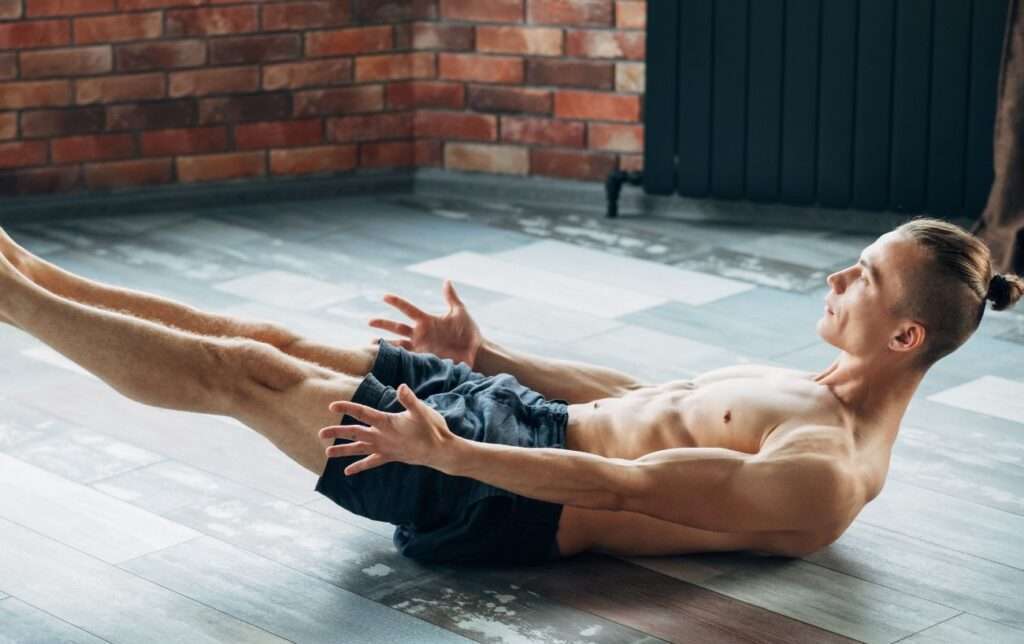
Yoga and Resistance Training
Many people wonder whether yoga can replace traditional resistance training when it comes to building muscular strength. While yoga alone can be highly effective in developing strength, combining it with resistance training can have synergistic effects and lead to optimal results.
Comparing muscle adaptation
Research has shown that yoga and resistance training can result in similar muscle adaptations, such as increased muscle cross-sectional area. Both modalities stimulate muscle growth and improve muscular strength. However, the mechanisms by which these adaptations occur may differ. Resistance training primarily induces muscle hypertrophy, or an increase in muscle size, whereas yoga may promote neuromuscular adaptations, such as increased motor unit recruitment and improved muscle coordination.
Synergistic effects
Combining yoga with resistance training can have synergistic effects on muscular strength development. Yoga helps to improve flexibility, balance, and body awareness, which are important for proper form and range of motion during resistance training exercises. On the other hand, resistance training can provide additional load-bearing exercises and progressive overload, which may be lacking in some yoga practices. By incorporating both practices, you can enjoy the benefits of increased strength, flexibility, and overall body conditioning.
Incorporating both practices for optimal results.
If your goal is to build muscular strength, incorporating both yoga and resistance training into your fitness routine can be beneficial. Yoga can serve as a complementary practice to resistance training, providing a well-rounded approach to muscular strength development. Consider dedicating certain days to yoga practice and others to resistance training. This way, you can reap the benefits of both modalities and optimize your results.
Factors Affecting Muscle Strength Development in Yoga
There are several factors that can influence your muscle strength development when practicing yoga. Understanding these factors can help you optimize your yoga practice and achieve the best possible results.
Individual’s body composition
Your body composition, including factors such as muscle mass, body fat percentage, and bone density, can affect your muscle strength development in yoga. Individuals with higher levels of muscle mass are likely to have a greater potential for strength gains compared to those with lower muscle mass. Similarly, individuals with lower body fat percentages may find it easier to build noticeable muscle tone and definition.
Training frequency and intensity
The frequency and intensity of your yoga practice can also impact your muscle strength development. Consistency is key when it comes to building strength, so aim to practice yoga regularly. This could mean committing to a certain number of days per week or incorporating shorter daily sessions. Additionally, increasing the intensity of your practice by challenging yourself with more advanced poses or holding poses for longer durations can further enhance your muscle strength development.
Nutrition and hydration
Proper nutrition and hydration are essential for optimal muscle strength development during yoga. Consuming a balanced diet that includes an adequate amount of protein, carbohydrates, and healthy fats can provide your muscles with the necessary nutrients to repair and grow. Staying properly hydrated before, during, and after your yoga sessions is also important for muscle function and recovery.
Rest and recovery
Rest and recovery play a crucial role in muscle strength development. When you engage in strength-building activities such as yoga, your muscles experience micro-tears. It is during the rest and recovery periods that your muscles repair and rebuild, leading to increased strength. Be sure to include rest days in your training schedule and prioritize getting sufficient sleep to support your muscle recovery and growth.
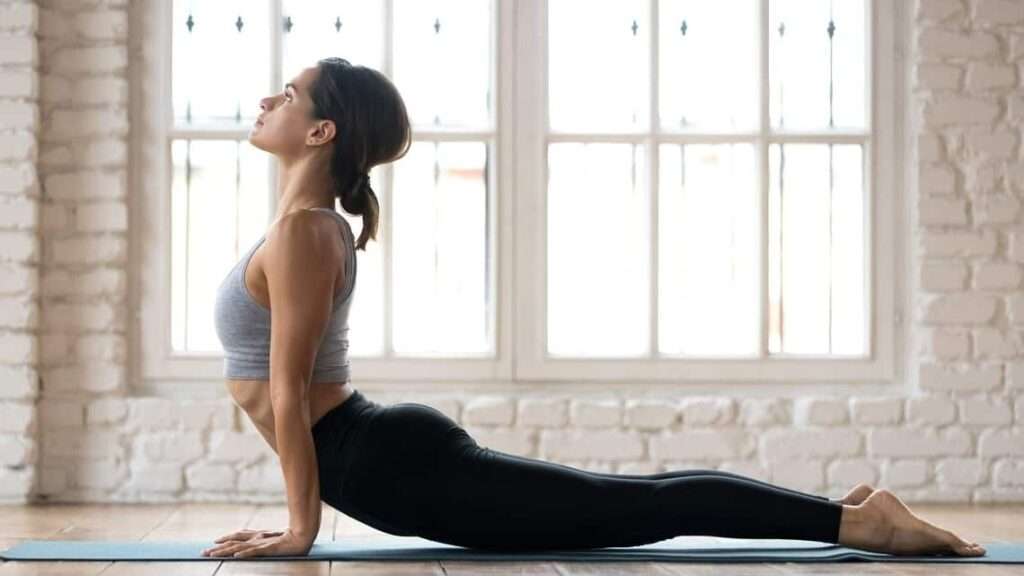
Potential Limitations of Yoga for Muscular Strength
While yoga can be highly effective in building muscular strength, there are some potential limitations to keep in mind.
Limited load-bearing exercises
One of the main limitations of yoga for muscular strength is the absence of traditional load-bearing exercises, such as heavy lifting or resistance machines. Yoga primarily uses body weight as resistance, which may not be challenging enough for individuals who are already experienced with resistance training or have specific strength development goals. However, it is worth noting that advanced yoga poses can require significant strength and can still provide a challenging workout.
Less emphasis on progressive overload
Progressive overload, or gradually increasing the intensity or difficulty of exercises, is a key principle in strength training. While some yoga styles and poses can be physically demanding and provide a sufficient stimulus for strength development, others may require additional modifications or variations to achieve progressive overload. Depending on your specific strength goals, you may need to supplement your yoga practice with other forms of resistance training to fully optimize muscle strength.
Specific muscle group targeting
Yoga usually focuses on full-body workouts rather than targeting specific muscle groups individually. While this can be beneficial for overall functional strength, it may not be ideal if you have specific muscle groups that you wish to prioritize for development. If you have specific strength goals for certain muscle groups, it may be necessary to incorporate additional exercises or resistance training modalities that specifically target those areas.
Research on Yoga for Muscular Strength
Numerous studies have explored the impact of yoga on muscular strength and compared it to traditional strength training. The research consistently shows that yoga can be an effective practice for building muscular strength.
Studies on yoga’s impact on muscle strength
A study published in the Journal of Strength and Conditioning Research found that a 10-week yoga program significantly increased upper body strength and muscular endurance in a group of college students. The researchers concluded that yoga can be an effective method for developing upper body strength, particularly in individuals who may not have access to traditional strength training equipment or facilities.
Another study published in the International Journal of Yoga Therapy examined the effects of a 12-week yoga program on muscular strength in older adults. The results showed significant improvements in lower body strength and balance, suggesting that yoga can be an effective practice for maintaining and improving muscular strength as we age.
Comparisons with traditional strength training
Multiple studies have compared the effects of yoga with traditional resistance training on muscle strength development. A study published in the European Journal of Applied Physiology found that both yoga and resistance training led to similar increases in muscular strength and size, suggesting that yoga can be as effective as traditional strength training for building muscle.
Another study published in the Journal of Alternative and Complementary Medicine compared the effects of yoga and resistance training on lower body strength in college students. The study found that both forms of exercise led to significant improvements in lower body strength, with no significant differences between the two groups. This suggests that yoga can be an effective alternative to traditional strength training for developing lower body strength.
Yoga as a complementary practice
In addition to its standalone benefits, yoga can also serve as a complementary practice to traditional strength training. A study published in the Journal of Sports Rehabilitation found that incorporating yoga into a resistance training program led to greater improvements in lower body strength and flexibility compared to resistance training alone. This suggests that combining both practices can result in enhanced muscular strength and overall physical performance.
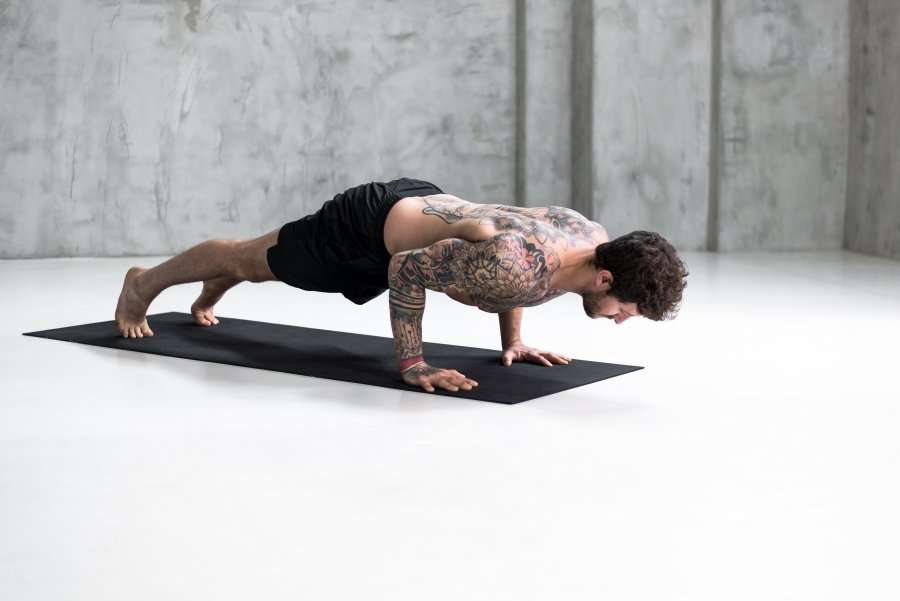
Practical Tips for Building Muscular Strength with Yoga
To make the most of your yoga practice for muscular strength development, consider these practical tips:
Consistency and regular practice
Consistency is key when it comes to building muscular strength with yoga. Aim to practice yoga regularly, whether it’s a few times per week or daily. The more you engage in the practice, the more your muscles will adapt and grow stronger over time.
Gradual progression
Just as in traditional strength training, it’s important to gradually progress your yoga practice. Start with the basic poses and gradually challenge yourself by exploring more advanced variations or increasing the duration of poses. Listen to your body and only progress when you feel comfortable and confident in your current level of strength.
Mind-muscle connection
Pay attention to your body and cultivate a strong mind-muscle connection during your yoga practice. Focus on engaging the specific muscles that each pose targets and visualize them becoming stronger with each repetition. The mind-muscle connection can help you maximize the effectiveness of each pose and enhance your muscular strength development.
Proper form and alignment
Maintaining proper form and alignment is crucial for safe and effective strength development in yoga. Pay attention to the alignment cues provided by your yoga instructor or use mirrors to observe your form. Practicing with proper alignment will ensure that you’re engaging the correct muscles and reducing the risk of injuries.
Conclusion
In conclusion, yoga can be a highly effective practice for building muscular strength. Through increased muscle tone, improved endurance, enhanced flexibility, and promotion of muscle balance, yoga offers numerous benefits for strengthening your muscles. By incorporating specific yoga poses, following yoga practices for strength enhancement, and considering the factors that affect muscle strength development, you can optimize your yoga practice for maximum results. While yoga alone can provide significant strength gains, combining it with traditional resistance training can have synergistic effects and lead to optimal muscular strength development. So roll out your yoga mat, strike a pose, and reap the benefits of building muscular strength with yoga.
